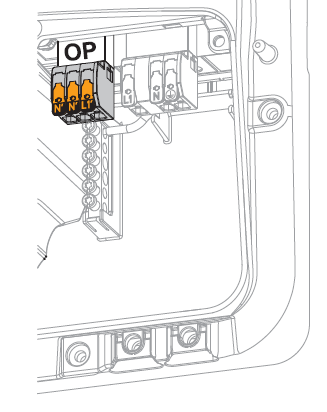Fronius PV Point Instructions and Information
Description
PV Point (OP) Information
IMPORTANT! If several backup power variants are available, please note that only one backup power variant may be installed and configured.

With the PV Point, in the event of a failure of the public grid, electrical devices can be connected to the Opportunity Power (OP) terminal and supplied with a maximum power of 3 kW, if enough power is available from the PV modules or an optional battery.
In grid-connected operation, the OP terminal is not supplied with voltage, therefore the connected loads will not be supplied with power in this operating mode.
IMPORTANT! A relay-based network switching setup is not possible.
Explanation - PV Point (OP)
The inverter can provide 220 ‑ 240 V at the PV Point. A corresponding configuration must be set up during commissioning.
At 220 ‑ 240 V output voltage, max. 13 A AC continuous current is available.
Example:
220 V *13 A = 2860 W
230 V *13 A = max. 3 kW
In backup power mode, some electrical appliances cannot function properly as starting currents are too high (for example, fridges and freezers). It is recommended to switch off non-essential loads during backup power mode. Overload capacity of 35% is possible for a duration of 5 seconds, depending on the capacity of the PV modules and/or the battery at that moment in time.
There is a brief interruption when switching from grid-connected mode to backup power mode. For this reason, the backup power function cannot be used as an uninterruptible power supply, for example for computers.
If no energy from the battery or the PV modules is available in backup power mode, backup power mode ends automatically. If sufficient energy becomes available from the PV modules once again, backup power mode starts again automatically.
In the event of excessive consumption, backup power mode is stopped and the "backup power overload" status code is displayed on the inverter's LED status indicator. The maximum power in backup power mode according to the technical data must be observed.

